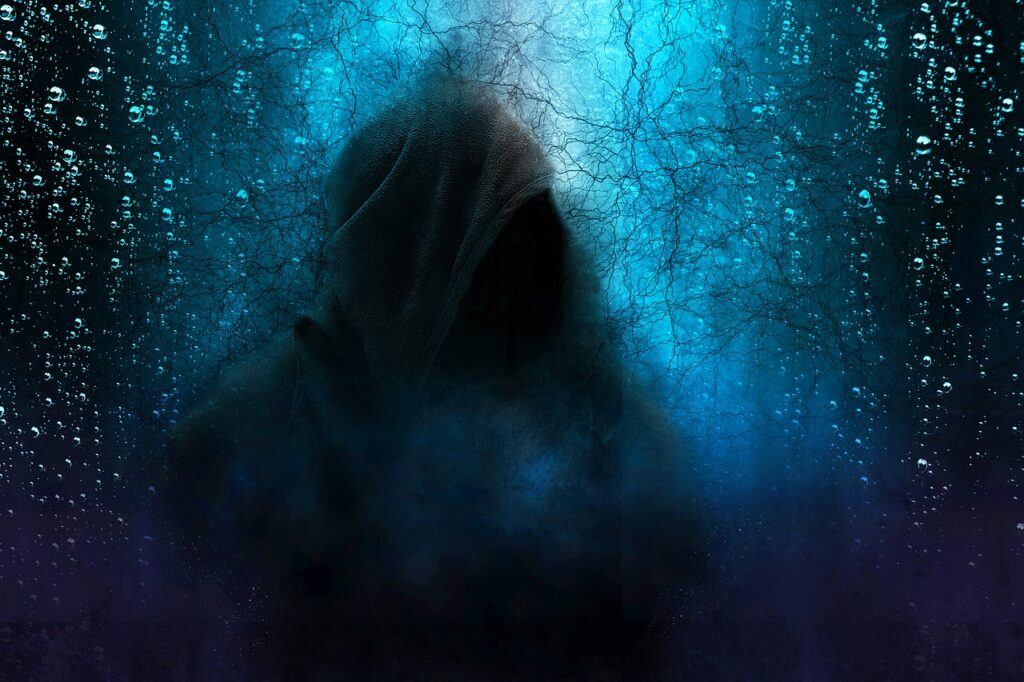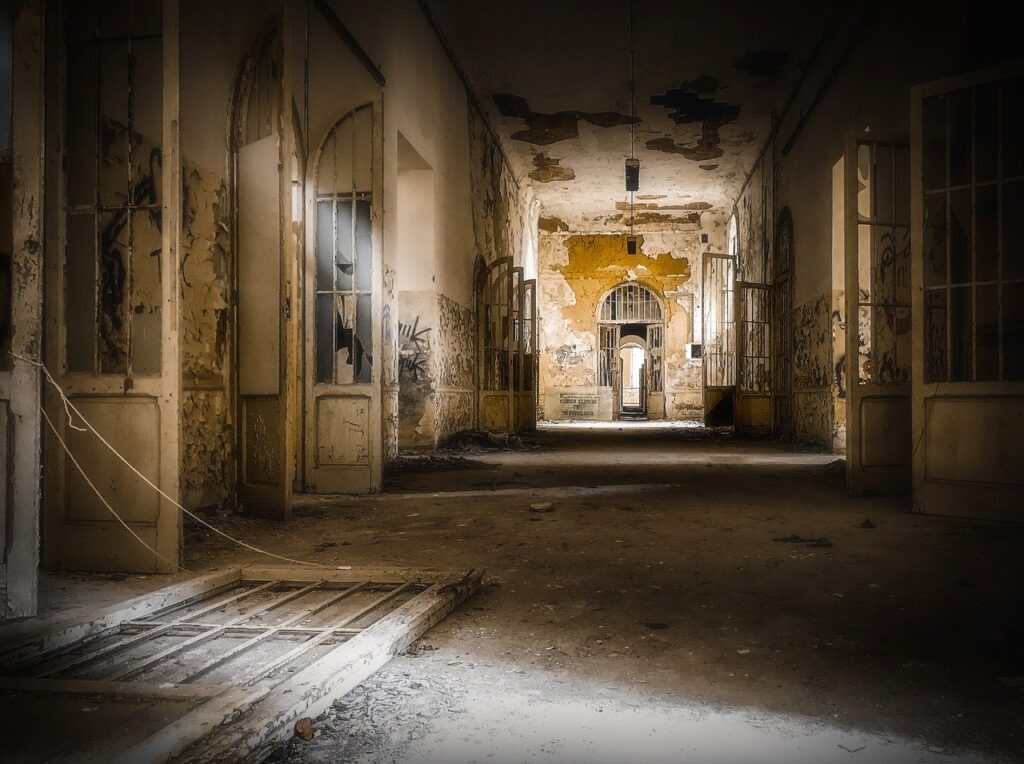
Welcome back, fearless writers, to the heart-pounding corridors of our Horror Story Writing Guide. In this fifth instalment, we’re about to delve into a world of heart-racing anticipation, where every flicker of candlelight and every rustle in the shadows ignites a symphony of nerves. Welcome to the realm of building suspense, where tension and terror intertwine to create narratives that grip your readers and never let go.

As we traverse this treacherous path of foreboding, join us in mastering the art of crafting suspense and plunging your readers into a maelstrom of anticipation that will haunt their dreams long after they’ve closed the pages of your horror novel. Here’s our guide on how to build suspense in writing.
Introduction: Crafting Tension and Dread – Building Suspense in Your Horror Novel
In the dimly lit corners of building suspense in horror fiction, an artful dance of anticipation unfolds—a delicate balance between what is known and what remains hidden.
Welcome to the realm of building suspense, where the heartbeats of your readers quicken, and their breaths catch in the stillness of anticipation. In this chapter on how to build suspense in writing, we delve into the intricate process of weaving suspense into the fabric of your narrative, igniting a sense of dread that lingers long after the final page.

The Pulse of Suspense
Building suspense isn’t merely a narrative tool; it’s a lifeline that tethers readers to the very essence of your story. It’s the art of making your audience yearn for answers while simultaneously fearing what those answers might reveal. Whether it’s the ominous creak of a door, the ominous silence before a revelation, or the gradual unveiling of a truth that shatters reality, building suspense is a craft that wields the power to immerse readers in a realm of tension and unease.
The Unseen and the Unknown
At the heart of building suspense lies a duality—the interplay between the unseen and the unknown. It’s about planting seeds of doubt, igniting curiosity, and setting the stage for the unexpected. As the master of your own horror narrative, you possess the tools to manipulate emotions, directing your readers’ attention to the dark corners where shadows lengthen and fears take root.
Throughout this exploration, we’ll unravel the intricate web of suspense-building techniques that elevate your horror novel from mere words on a page to an immersive experience that sends shivers down the spine. From pacing to foreshadowing, from strategic reveals to character-driven tension, we’ll dissect the components that build suspense and guide readers along a path of spine-tingling anticipation.
Prepare to enter a realm where every pause, every hushed whisper, and every hidden truth becomes a brushstroke in the canvas of terror. Join us as we delve into the art, the science, and the essence of building suspense—a journey that will forever change the way you wield the power of anticipation in your horror storytelling.

Understanding Suspense in Horror: The Pulse of Unrelenting Anticipation
In the realm of horror fiction, suspense is the beating heart that propels stories forward, infusing them with an electric current of anticipation. It’s the art of captivating readers with the promise of revelations yet to come, of secrets poised on the precipice of discovery. As we delve deeper into the mechanics of building suspense, let’s unravel the threads of this essential narrative element and understand its profound impact on the realm of horror.
The Psychological Symphony
At the core of how to build suspense in writing, it’s a psychological symphony that plays on our primal fears and desires. It places readers in a state of heightened awareness, where their senses are attuned to every detail, every whisper of danger, and every shift in the narrative landscape. Through meticulous pacing and calculated revelations, you, the conductor of this symphony, orchestrate a rollercoaster of emotions that keeps readers teetering on the edge of their seats.
Anticipation: The Art of Holding Breath
Building suspense is akin to holding your breath in a darkened room—the tension is palpable, the anticipation unbearable. It’s the uncertainty of what lies around the corner, the unease that settles deep within, and the inexorable pull towards uncovering the unknown. As you infuse your horror novel with suspense, you tap into a wellspring of reader engagement, pulling them deeper into your narrative web.
The Dance of Light and Shadow
Think of building suspense as a dance of light and shadow—a delicate interplay between revealing and concealing. It’s the art of divulging just enough to keep readers hungry for more, while still shrouding the heart of the mystery in darkness. With every revelation, you kindle new questions, fueling the burning desire to unravel the enigma that lies at the heart of your tale.
Building Suspense: A Unified Experience
The true mastery of building suspense lies in creating a unified experience—an intricate dance between your narrative, characters, and readers’ emotions. By immersing readers in a world where the unknown lurks around every corner, you elicit emotional responses that transcend the printed page.
As we journey further into how to build suspense in writing, we’ll uncover the mechanisms that elevate suspense from a mere technique to an immersive, spine-tingling experience.
In the next segments, we’ll dissect the elements that contribute to building suspense, from pacing and foreshadowing to strategic reveals and character-driven tension. So fasten your seatbelts, dear writers, for we’re about to plunge into the labyrinth of suspense-building techniques that will forever alter the way you craft narratives that grip your readers and refuse to let go.

Pacing: The Rhythm of Tension – Crafting the Symphony of Suspense
In the intricate art of storytelling, pacing is the conductor’s baton that guides readers through the symphony of suspense. As we continue our exploration of building suspense, we delve into the transformative power of pacing—a delicate dance that dictates the tempo of tension and the cadence of anticipation. Within these lines, you’ll uncover the secrets of sculpting tension, from heart-pounding crescendos to the quiet breaths that precede the storm.
The Pulse of Suspense
Pacing is the heartbeat that echoes within the core of your narrative, orchestrating the ebb and flow of readers’ emotions. Just as a heart quickens during moments of excitement, the pacing of your story intensifies during climactic scenes, urging readers to turn the pages with bated breath. Are you still wondering how to build suspense in writing? The answer lies in controlling the rhythm, ensuring that tension doesn’t plateau but escalates, drawing readers deeper into the vortex of your horror world.
The Rapid Heartbeat Moments
Imagine a rollercoaster hurtling through a series of exhilarating drops and hairpin turns. These rapid heartbeat moments are the accelerations that propel readers to the edge of their seats. They occur during pivotal scenes of danger, revelation, or confrontation, creating an adrenaline rush that mirrors the characters’ experiences. By expertly manipulating the pacing in these instances, you induce heart-pounding anxiety while building suspense that resonates with your audience.
The Slow-Burning Tension
While rapid heartbeat moments evoke a visceral response, slow-burning tension is the undercurrent that seeps into readers’ subconscious. This method involves gradually escalating unease over a prolonged period, much like the tightening of a noose. It’s the shadow that creeps behind a character’s every step, the unsettling silence that stretches before a looming threat. By employing this technique, you draw readers into an immersive experience where suspense lurks beneath the surface, waiting to unfurl its dread.
Mastery in Motion
As you navigate the intricate terrain of pacing while building suspense, you wield the power to shape readers’ emotions with precision. By seamlessly alternating between rapid heartbeat moments and slow-burning tension, you create a dynamic rhythm that mirrors the heartbeat of fear itself. To expand on how to build suspense in writing: The answer is in understanding the ebb and flow of dread, the crescendo and decrescendo of anticipation.
Prepare to embark on a journey that will forever alter the way you control time within your narrative. As we delve into the subsequent segments, we’ll further dissect pacing techniques, unveiling the nuances that transform mere words into an orchestra of suspense. With each turn of the page, you’ll delve deeper into the heart of pacing, learning to choreograph tension and guide readers through an unforgettable symphony of dread.

Foreshadowing: Planting Seeds of Fear – Weaving the Threads of Suspense
In the realm of horror storytelling, foreshadowing is the delicate art of casting shadows into the future, of hinting at the horrors yet to unfold. As we continue our exploration of building suspense, we delve into the labyrinth of foreshadowing—a technique that allows you to tantalise readers with the promise of impending dread. Within these pages, you’ll unearth the intricacies of this narrative tool and learn to wield its power to elevate your storytelling to chilling heights.
The Whisper of Fate
Foreshadowing is the whisper of fate that hangs in the air, a haunting echo that foreshadows the destiny of your characters and the trajectory of your narrative. It’s the trail of breadcrumbs that you lay, inviting readers to follow as they navigate the intricate web of your plot. By sprinkling subtle hints along the way, you forge a connection between readers and your story, inviting them to anticipate and dread what’s to come.
The Art of Implied Dread
At its core, foreshadowing is the art of implying without revealing—an intricate dance between giving readers enough to pique their curiosity and withholding just enough to keep them guessing. It’s the open door at the end of a dimly lit corridor, the faint rustling in the darkness that hints at an encroaching presence. When executed masterfully, foreshadowing intensifies the sense of foreboding, compelling readers to turn the page while dreading what lies beyond.
Cultivating Suspenseful Paranoia
Well-executed foreshadowing introduces an element of paranoia, an unsettling feeling that something ominous lingers just out of sight. As readers internalise the hints you’ve woven into the narrative tapestry, they become active participants in the anticipation of the unknown. With every revelation, every development, the tension builds, and the dread deepens, creating an immersive experience where readers feel the heartbeat of fear as acutely as your characters do.
The Subtle Thread of Terror
The subtle thread of terror that foreshadowing weaves throughout your horror novel is a testament to your ability to manipulate emotions and immerse readers in your world. As you continue on your journey of building suspense, remember that foreshadowing is your ally—an ally that whispers secrets, casts long shadows and leaves a trail of unease in its wake. By mastering this art, you open the door to a realm of heightened anticipation, where the line between imagination and reality blurs into a tapestry of dread.
In the upcoming segments on how to build suspense in writing, we’ll explore more aspects of foreshadowing, from its various forms to the impact it has on character development and plot progression. Prepare to immerse yourself in a symphony of hints and innuendos as you learn to plant seeds of fear that sprout into a forest of suspense, captivating your readers and holding them captive until the very last page.

Unveiling Secrets: Strategic Reveals – The Art of Controlled Revelation
In the realm of suspense, the strategic reveal is the moment when shadows part, allowing a sliver of light to pierce the darkness. As we journey deeper into the intricacies of building suspense, we step into the realm of unveiling secrets—a delicate dance where the timing of revelation becomes a tool to manipulate tension and transform the reader’s experience. Within these lines, you’ll uncover the power of well-timed reveals and their ability to reshape the landscape of dread.
The Art of Controlled Revelation
Strategic reveals are the brushstrokes that paint vivid images within the canvas of your horror narrative. They’re the calculated decisions to provide glimpses of crucial information at just the right moment, like shards of glass catching the light amidst the shadows. By controlling the pace and timing of these reveals, you harness the ability to guide readers through a maze of anticipation, ensuring that every twist and turn leaves them yearning for more.
Heightening Tension Through Timing
The impact of a well-timed reveal is akin to the sensation of a drumbeat within the chest—intense, unforgettable, and reverberating. By holding back essential information until the opportune moment, you manipulate tension to crescendo, drawing readers deeper into the narrative’s heartbeat. This calculated tension is the backbone of suspense, and your ability to wield it with precision transforms each page into an instrument of terror.
The Narrative Alchemy
Strategic reveals possess an almost alchemical quality, capable of transmuting the very essence of your story. When executed skillfully, they have the power to reshape readers’ understanding, turning what was once certain into the uncertain, and what was once familiar into the foreign. Through these revelations, you control the evolution of your characters’ journey and the reader’s emotional investment, ensuring that suspense lingers long after the story concludes.
A Tapestry of Revelation
As you traverse the labyrinth of suspense, remember that strategic reveals are the threads that weave a tapestry of anticipation. Each reveal carries the weight of the unknown, promising answers that alter the trajectory of your narrative. By cultivating an environment where secrets are doled out with precision, you elevate the reader’s engagement, ensuring that they remain captivated, captivated, and undeniably hooked.
In the forthcoming segments on building suspense, we’ll delve into the intricacies of different types of strategic reveals and the impact they have on character development, plot progression, and reader immersion. Prepare to unlock the door to a world where revelation becomes a dance, where the rhythm of anticipation is your choreography, and where every secret unveiled sends shockwaves through your readers’ hearts.

Character-Centric Suspense: Forging Emotional Bonds in the Crucible of Fear
In the symphony of suspense, characters are the instruments that play the haunting melody, weaving their stories into the fabric of dread. As we continue our exploration of building suspense, we delve into the realm of character-centric suspense—a landscape where the emotions of your characters become the conduits through which readers experience tension and terror. Within these lines, you’ll unearth the power of crafting characters that breathe life into the darkness.
Characters as Emotional Anchors
Character-centric suspense is a canvas where emotions paint vivid portraits, capturing readers’ hearts and binding them to your narrative journey. By investing in character development, you create emotional anchors—characters whose experiences and vulnerabilities become mirrors reflecting readers’ own fears and hopes. These anchors serve as the bridge that transports readers from the realm of reality into the shadows of your story, ensuring that every twist and turn evokes a visceral response.
The Magnetic Pull of Attachment
Readers’ attachment to characters is the magnetic pull that draws them deeper into the narrative abyss. When they feel joy, pain, or fear through a character’s eyes, they become active participants, living the story rather than merely reading it. This attachment intensifies the stakes, as readers agonise over the choices characters must make and fear for their safety in the face of impending doom. Through this emotional investment, you forge an unbreakable connection between your readers and your world.
Inherent Vulnerabilities
To master character-centric suspense, embrace the vulnerabilities that define your characters. It’s in their flaws, fears, and desires that readers find reflections of their own humanity. As characters grapple with their personal demons, navigate treacherous landscapes, and confront unfathomable horrors, readers mirror their own journeys of triumph and despair. By weaving their struggles into the narrative tapestry, you cultivate empathy and ensure that readers feel every heartbeat of fear.
Characters as Catalysts of Tension
Characters are not just participants in the story; they’re catalysts that propel suspense forward. Their choices, reactions, and interactions influence the ebb and flow of tension, dictating the rhythm of the reader’s emotional journey. As you mould characters who embody the essence of the human experience, you transform them into conduits of dread, drawing readers deeper into the abyss where fear and anticipation entwine.
In the upcoming segments of building suspense, we’ll delve further into character-centric suspense, exploring techniques to create well-rounded characters whose journeys mirror the reader’s emotional trajectory. Prepare to embark on a transformative exploration where characters transcend the page, transcending the boundaries between fiction and reality, and where their struggles become a reflection of the human condition in the face of the unknown.

Setting and Atmosphere: The Crucible of Suspense
Within the pages of a horror narrative, setting and atmosphere are the architects that shape the very essence of dread. As we continue our exploration of building suspense, we step into the realm where the environment becomes a character of its own—a force that wraps around readers and characters alike, intensifying the tension and moulding their emotions. Within these lines, you’ll unravel the secret to crafting settings that mirror the soul of suspense.
The Power of Atmosphere
Atmosphere is the air readers breathe, the heartbeat of the environment that pulses beneath the surface of your words. It’s the oppressive weight of darkness in a haunted mansion, the eerie silence of a desolate forest, the palpable unease that seeps through every crevice. By meticulously constructing an atmosphere that drips with tension, you submerge readers in a sensory experience that amplifies their dread and anticipation.
Setting as an Extension of Emotion
A well-crafted setting is more than a backdrop; it’s an extension of the emotions coursing through your narrative. The choice of location—the decrepit asylum, the abandoned ship, the ancient cemetery—mirrors the emotional landscape of your characters. It adds a layer of complexity to their experiences, as they navigate physical and psychological landscapes fraught with danger. By merging the internal and external, you create an atmosphere where fear takes root and blossoms.
The Dance of Foreshadowing
Setting and atmosphere perform a delicate dance with foreshadowing, hinting at horrors yet to unfold through the subtle language of the environment. The flickering candlelight that casts dancing shadows, the cold wind that whispers secrets—it’s the language of suspense that speaks to readers’ primal fears. As characters traverse the terrain you’ve created, readers become immersed in a sensory symphony that deepens their emotional connection to the narrative.
A Tapestry of Tension
As you wield the power of setting and atmosphere, remember that every word is a brushstroke that contributes to the tapestry of suspense. Every description, every detail adds a layer of tension, drawing readers into a world where the unknown lurks around every corner. By carefully crafting settings that pulse with life, you ensure that your readers’ hearts beat in harmony with the narrative, racing as characters confront the horrors that lie ahead.
In the forthcoming segments on building suspense, we’ll journey deeper into the intricacies of crafting immersive settings and harnessing atmospheric power. Prepare to learn the art of conjuring environments that transport readers into a realm of fear and anticipation, where every corner holds the promise of discovery and dread.

Twists and Turns: The Dance of Unexpected Suspense
In the labyrinth of suspense, twists and turns are the choreography that keeps readers on the edge of their seats, eager for the next revelation. As we continue exploring how to build suspense in writing, we enter the realm where unexpected plot twists become the heartbeat of anticipation—an art that keeps readers engaged and hungry for more. Within these lines, you’ll uncover the secrets to weaving surprises that shatter expectations and deepen the sense of dread.
The Art of Disruption
Twists and turns are the masterful disruptions that transform the trajectory of your narrative. They’re the unexpected revelations that shake the foundation of what readers thought they knew, leaving them reeling in astonishment. By introducing these narrative jolts, you cultivate an environment where the ground beneath readers’ feet is ever-shifting, compelling them to turn the pages with an insatiable hunger for resolution.
Sculpting Suspense Through Surprise
Well-crafted plot twists are more than mere surprises; they’re sculpted instruments of suspense. Each twist reshapes the emotional landscape, forcing characters and readers to confront the unexpected with bated breath. As you guide characters through the labyrinth of your imagination, these surprises amplify the stakes, blurring the line between reality and fiction and ensuring that readers are perpetually immersed in the dance of dread.
The Ebb and Flow of Anticipation
The timing of plot twists is the pulse that propels the rhythm of suspense. By strategically placing these revelations at pivotal moments, you control the ebb and flow of anticipation, ensuring that tension builds and releases in a symphony of emotions. These twists become the landmarks in the journey—a testament to your mastery in orchestrating the reader’s experience.
A Symphony of Revelation
As you navigate the realm of twists and turns, remember that every surprise is a note in a symphony of revelation. Each unexpected development adds complexity to the narrative’s melody, enriching the reader’s experience as they uncover layers of truth and deceit. By skillfully manipulating these elements, you ensure that the shadows remain alive with possibility, and the darkness is ripe with enigma.
In the next segment on building suspense, we’ll delve deeper into the art of crafting unexpected plot twists that amplify suspense and leave readers craving resolution. Prepare to master the art of deception and revelation, as you become the architect of surprise, reshaping the contours of your narrative landscape and leaving readers breathless with every unexpected turn.

Climactic Moments: Where Suspense Reaches its Pinnacle
Within the realm of suspense, climactic moments are the peaks that punctuate the landscape of anticipation. As we continue our exploration of building suspense, we ascend to the summit where tension culminates—a pinnacle that promises a cathartic release and a reward for readers who have journeyed through the shadows. Within these lines, you’ll unravel the art of crafting climactic moments that elevate suspense to its zenith.
The Significance of Climax
The climax is the crescendo that resonates through the narrative, the culmination of tension that readers have been yearning for. It’s the moment when choices are made, destinies are sealed, and the threads of suspense converge into a tapestry of revelation. By understanding the significance of the climax, you wield the power to create an experience that lingers long after the final page is turned.
A Satisfying Pay-Off
Climactic moments offer a satisfying pay-off—an emotional catharsis that follows the rollercoaster of anticipation. This pay-off is the resolution readers crave, the answers to questions that have haunted them from the story’s inception. By building tension masterfully, you ensure that the climax becomes a crescendo of emotion, releasing the accumulated energy in a way that resonates deeply with your audience.
The Art of Balance
Crafting climactic moments is an art of balance—a delicate equilibrium between suspense and resolution. Too much tension without a satisfying climax can leave readers frustrated, while a climax that falls flat can dissipate the carefully cultivated anticipation. By orchestrating this delicate dance, you guide readers through the journey of fear, ensuring that the final destination is both impactful and resonant.
Eternal Echoes
The impact of climactic moments extends beyond the confines of the narrative. A well-executed climax lingers in the reader’s mind—an echo that reverberates through their thoughts and emotions long after the story ends. It becomes a testament to your mastery in crafting suspense, a testament to your ability to manipulate emotions and forge a connection between your readers and your characters.
In the forthcoming segments on building suspense, we’ll delve into the intricacies of crafting climactic moments that satisfy, resonate, and leave a lasting impression. Prepare to embark on a journey where suspense reaches its zenith, where the culmination of tension becomes a symphony of emotion, and where the final page leaves readers in awe of the narrative’s power.

Release and Resolution: The Art of Lingering Suspense
In the tapestry of suspense, release and resolution are the threads that tie the narrative’s knots, offering closure while preserving the lingering shivers of anticipation. As we delve deeper into building suspense, we arrive at the junction where tension meets resolution—a delicate balance where the story finds its conclusion yet leaves readers haunted by unanswered questions. Within these lines, you’ll unveil the secrets of releasing tension while retaining the spectral echoes of suspense.
The Delicate Dance of Closure
Release and resolution mark the story’s culmination, the moment when characters’ arcs find their denouement. It’s the breath of relief after a prolonged state of unease, but it’s also the juncture where readers are left to contemplate the lingering shadows. By crafting closure that satisfies yet maintains an air of enigma, you guide readers through a cathartic experience that lingers beyond the final page.
The Power of Lingering Questions
Leaving readers with lingering questions is the art of planting seeds in the fertile soil of their imagination. These questions become the threads that connect them to the narrative, pulling them back to the story even after it concludes. By offering partial answers and hints, you transform readers into active participants, encouraging them to piece together the puzzle long after the story ends.
The Legacy of Emotion
Release and resolution are not mere plot points; they’re vessels of emotion that resonate through time. The emotions that characters experience, the lessons they learn, and the fears they conquer become a legacy that readers carry with them. By delivering a satisfying conclusion that is emotionally resonant, you ensure that the story remains alive in readers’ hearts, forever entwined with their own experiences.
The Ephemeral Echo of Suspense
As you navigate the realm of release and resolution when building suspense, remember that the echo of suspense can endure even in the face of closure. By crafting an ending that retains an air of mystery and wonder, you allow readers to continue exploring the narrative long after the final word is read. This ephemeral echo ensures that the story’s impact transcends its pages, remaining a part of readers’ lives.

Conclusion: The Mastery of Suspense Unveiled
As we conclude our journey into the realm of suspense, we find ourselves at the crossroads of anticipation and revelation. In this instalment of “Building Suspense,” we’ve delved into the artistry of crafting tension that leaves readers trembling with anticipation. Let’s recap the key takeaways from this chapter:
Key Takeaways:
- Understanding Suspense: Dive into the essence of building suspense, the heartbeat of tension that keeps readers engaged and hungry for answers.
- Elements of Suspense: Explore the building blocks of suspense, from pacing and foreshadowing to strategic reveals that maintain the rhythm of dread.
- Setting and Atmosphere: Harness the power of setting and atmosphere to create an environment that resonates with readers’ emotions and intensifies their connection to the story.
- Character-Centric Suspense: Understand the role of character development in cultivating emotional investment, enhancing the reader’s journey through the narrative.
- Twists and Turns: Master the art of unexpected plot twists, creating an ever-shifting landscape that keeps readers engaged and eager for more.
- Climactic Moments: Learn the significance of the climax in delivering a satisfying pay-off, resonating with readers and leaving a lasting impact.
- Release and Resolution: Balance the release of tension with resolution, preserving the allure of unanswered questions and emotions that linger.
Embrace the Experimentation
As you continue your journey as a horror storyteller, remember that suspense is your canvas, and the techniques outlined in this article are your brushstrokes. Experiment with different methods, blend the elements, and create narratives that weave anticipation and revelation into a tapestry of fear and wonder.
Stay Tuned for What’s Next
Our exploration of the intricacies of horror storytelling is far from over. In our next instalment, we’ll delve into a topic that delves into the very essence of fear itself, peering beyond the veil that separates reality from the unknown. Get ready to unlock the secrets of “Writing the Perfect Jump Scare: Mastering Moments of Intense Tension.”
Submit Your Dark Creations
Don’t forget, the deadline for horror novel submissions is looming. If you’ve been brewing nightmares, crafting terrors, and forging worlds of horror, submit your works for publishing consideration by August 31, 2023. Let your imagination run wild as you step into the realm of darkness and possibility.
In the forthcoming segments, we’ll continue to unravel the intricacies of horror storytelling, unlocking the doors to unimaginable realms and arming you with the tools to craft tales that linger in the shadows of readers’ minds. Stay tuned, for the journey has only just begun.


